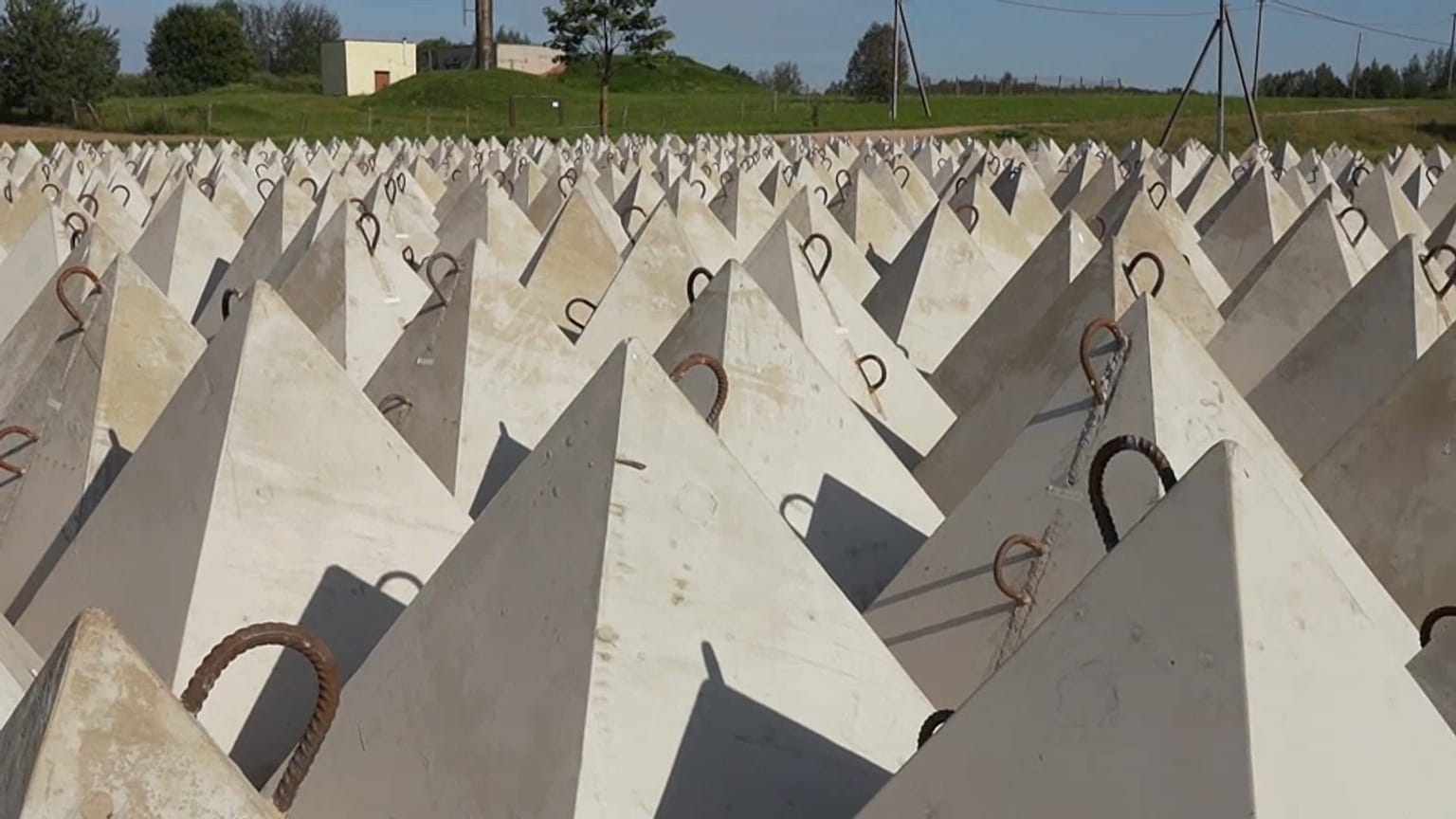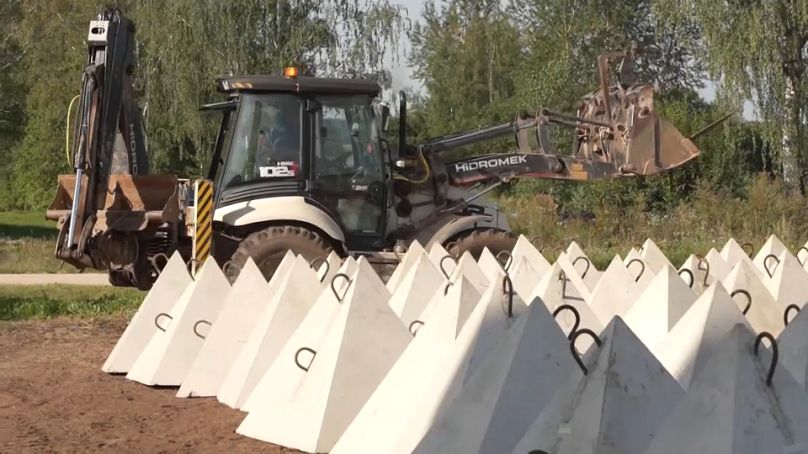Concrete structures, also known as "Lego blocks", will be placed along Latvia's border with Russia and Belarus.
 ADVERTISEMENT
ADVERTISEMENT
Construction is underway on the first phase of the Baltic Defence Line in Latvia's easternmost region of Latgale.
Pyramidal obstacles made of reinforced concrete have been transported on trucks to the area, where they will be used to protect the external borders of Latvia and Europe.
For now, the army is placing the obstacles together in depots owned by municipalities or state institutions near the border with Russia and Belarus.
They will then be placed at intervals along the border in places the National Armed Forces considers necessary.
"This material was used during World War II. It is still visible in forests or mosses here and there in Europe. They may look prehistoric, but, unfortunately, with the ongoing hostilities in Ukraine, they are still an effective tool," says Kaspars Lazdins, Inspector of Latvia's National Armed Forces Engineers.
"We are using these materials to not only prevent hostile action in a time of war, but to also acts as a deterrent," he adds.
The structures are being produced by local companies in the city of Daugavpils, and they will be reinforced with explosives and mines in the future.
What is the Baltic Defence Line?
In January, Latvia, Lithuania and Estonia jointly announced their plan to build a defensive line that would protect their external borders with Russia and Belarus following Russia's war of aggression in Ukraine.
According to the Foreign Policy Institute, the line will not include coastal defences but rather land-based bunkers, counter-mobility parks and distribution lines.
It will also include the creation of natural barriers such as trees and drainage ditches and the reinforcement of existing razor wire fences along the Lithuanian and Latvian borders with Belarus, according to the Centre for European Policy Analysis (CEPA).
The proposal for a defensive line emerged after the NATO Madrid Summit last year, during which it was agreed that significant reinforcement would be needed along the borders of Europe and NATO, which would be able to defend against a full-scale Russian invasion.















